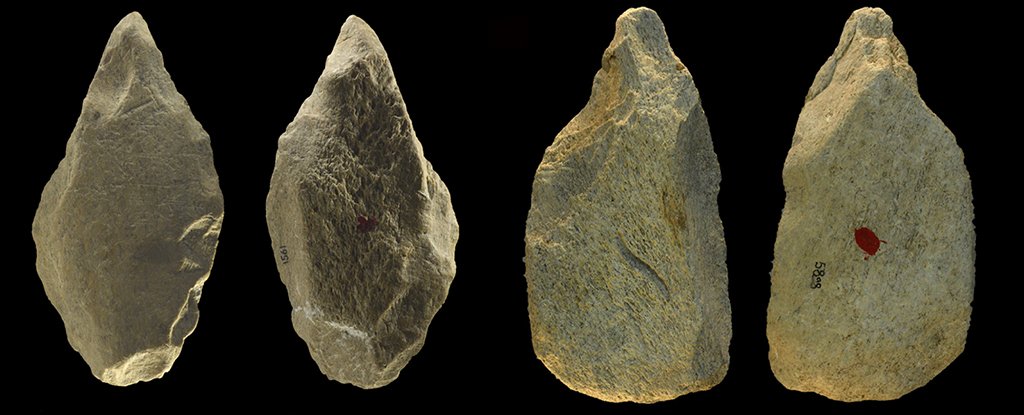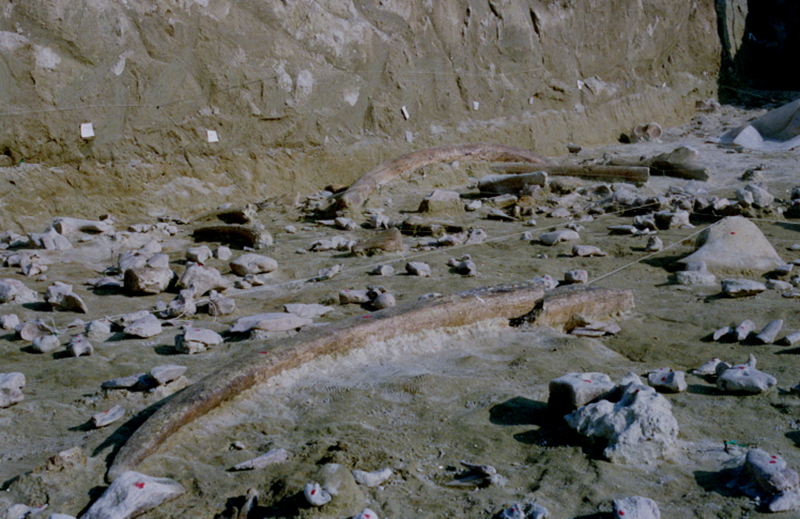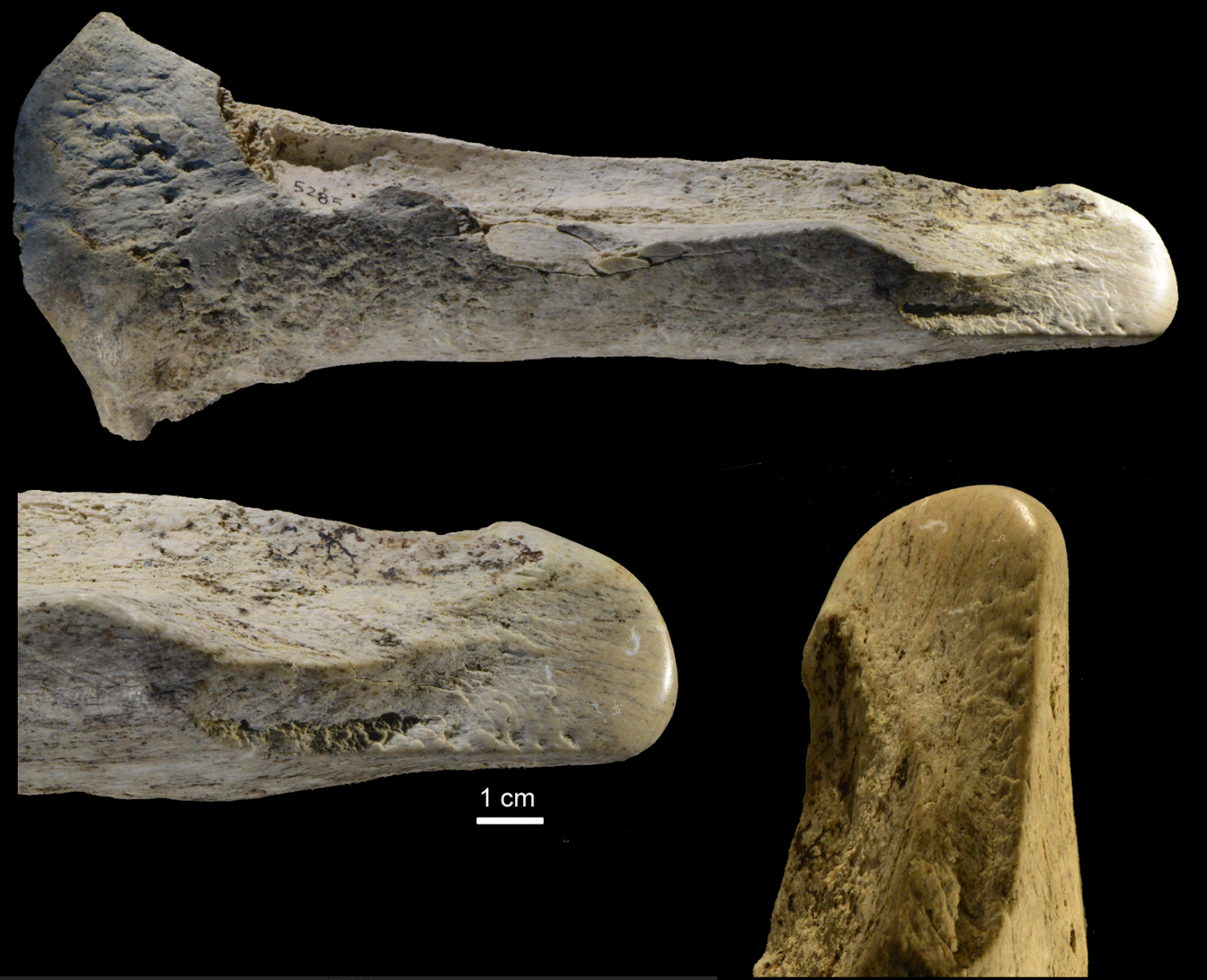
Posted on 09/01/2021 11:40:02 AM PDT by Red Badger

As far as Lower Paleolithic archaeology goes, this is quite the haul: Experts have uncovered a record 98 elephant-bone tools at a site dating back some 400,000 years. This discovery could change our thinking on how some of the early humans – such as Neanderthals – fashioned implements like these.
The bones were collected from a place called Castel di Guido, close to modern-day Rome. In the dim and distant past, it was a popular watering hole for the now-extinct straight-tusked elephant (Palaeoloxodon antiquus), and it looks as though a substantial number of the animals died there too.
This newly identified collection of tools shows the ancient hominids of Castel di Guido didn't waste the bones that were left, but instead set up a primitive production line with methods that we haven't previously seen this far back in time, at least not to this extent.
"We see other sites with bone tools at this time," says archaeologist Paola Villa, from the University of Colorado Boulder. "But there isn't this variety of well-defined shapes."
"At Castel di Guido, humans were breaking the long bones of the elephants in a standardized manner and producing standardized blanks to make bone tools. This kind of aptitude didn't become common until much later."

elephant bones 2 The Castel di Guido site. (Villa et al., PLOS One, 2021)
Based on the evidence gathered from other sites, early humans would usually just make use of whatever bone fragments were available, without refining or adapting them – but at Castel di Guido, it was different.
The technique they used is known as percussion flaking, or chipping off bits of bone with a separate implement to make specific tools. Stone tools would have been shaped in a similar way, and they were much more common at this time, which makes the discovery of 98 bone tools such a surprise.
That's not to say the ancient humans living here were particularly 'smart', the researchers note. The explanation might simply be that they had a lot more elephant bones to work with than other groups, and less access to naturally occurring, large pieces of flint for making stone tools instead.
The tools they produced included ones that may have been used to slice through meat, as well as wedges that could have been deployed to create leverage for breaking up large bones like elephant femurs.
"First you make a groove where you can insert these heavy pieces that have a cutting edge," says Villa. "Then you hammer it, and at some point, the bone will break."
One of the most interesting tools discovered at the site is what's known as a lissoir: a bone that's long and smooth at one end, and would have been used to treat leather. These kinds of tools didn't become common until about 300,000 years ago.

A bone tool with a smooth edge and rounded tip A lissoir found at the site. (Villa et al., 2021, PLOS One)
Given the diversity of tool types here, and the techniques used to create them, archaeologists may have to recalibrate the timelines for when these instruments and their production methods were originally developed.
For now though, this seems like an isolated spurt of bone production technology. Based on the available evidence, the researchers think that Neanderthals occupied the site and produced the record-breaking number tools that have now been cataloged.
"About 400,000 years ago, you start to see the habitual use of fire, and it's the beginning of the Neanderthal lineage," says Villa. "This is a very important period for Castel di Guido."
The research has been published in PLOS One.
PinGGG!.........................
I have a pronounced occipital bun.
Maybe I’m a Neanderthal.
They need to concentrate on the habitual fire and brimstone that awaits the end of their own lineage if they haven't put their faith in Jesus Christ. This world is not our home.
Even still, didn't we already know that Homo Heidelbergensis lived roughly 600,000 years ago?
Apeman - The Kinks
https://www.youtube.com/watch?v=aRHqs8SffDo
Lol. Why is an anthropology article in a science forum?
That song reminds me of their song in The Avengers.

I thought homosapiens were just 30,000 years old.
Only some of us.....................
If they’re Craftsman tools, they’re still under warranty.
“human” man, or animal man...
I read years ago that fresh bones will knap as well as flint. Don’t know if it is as sharp.
and if there’s a 9/16” half inch drive socket in there, it’s mine
I just perused the Cerutti find at the San Diego Museum of Natural History. Similar in that it was secondary evidence of human activity 130,000 years ago, where heavy boulders smashed the bones of mastodons. Matching bone fragments and stone fragments also found nearby. The “indians” were supposed to be here, 15 K years ago, maximum.
I’ve never tried it.....................
Our files show that your flint and bone tools are about to go out of warranty.
Please contact us for further information regarding this important object..............
The better question is why is this article in Pets/Animals? Science is appropriate for it.
Disclaimer: Opinions posted on Free Republic are those of the individual posters and do not necessarily represent the opinion of Free Republic or its management. All materials posted herein are protected by copyright law and the exemption for fair use of copyrighted works.